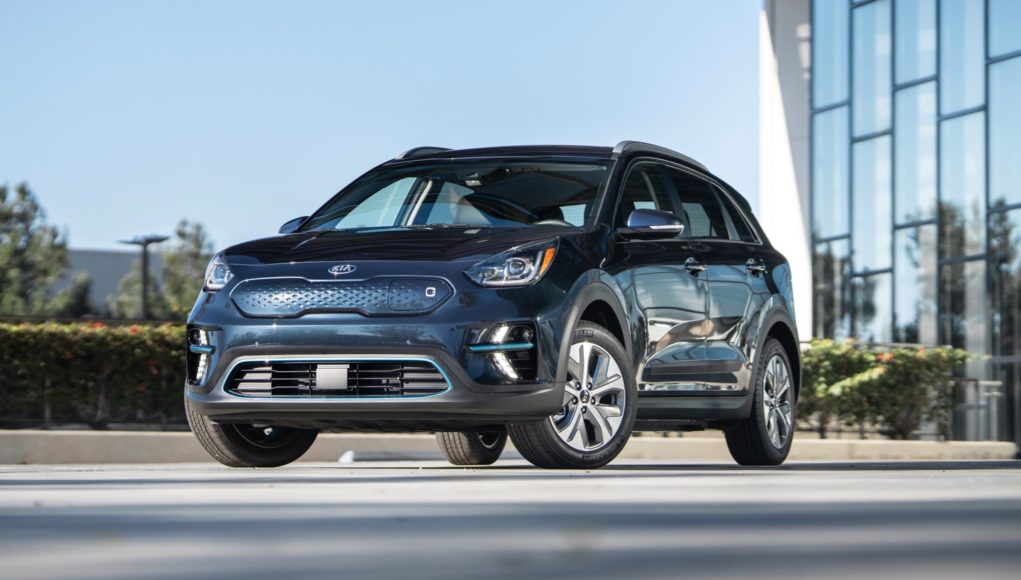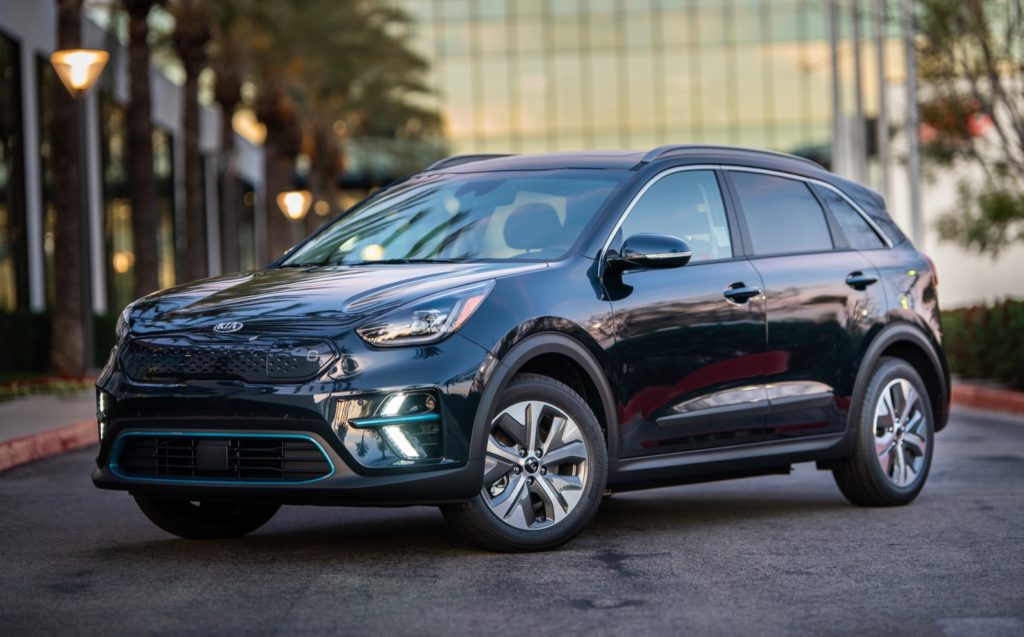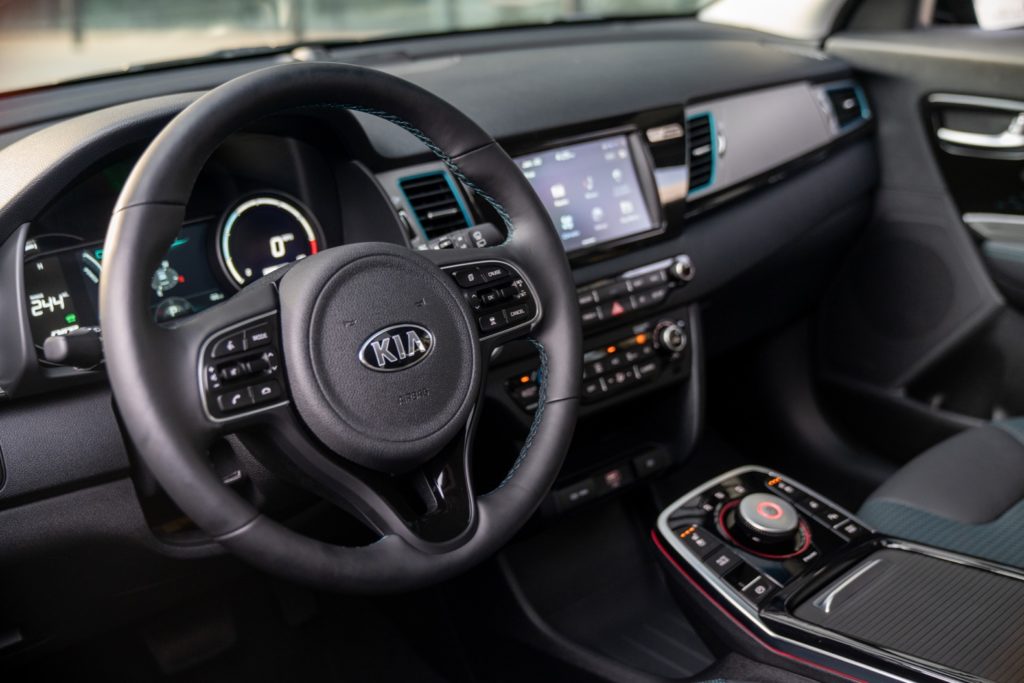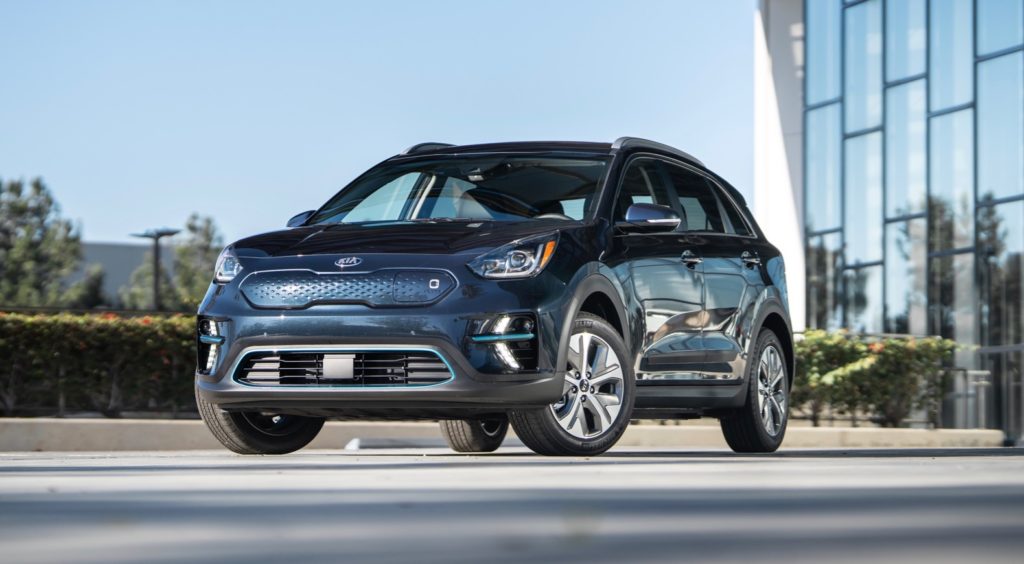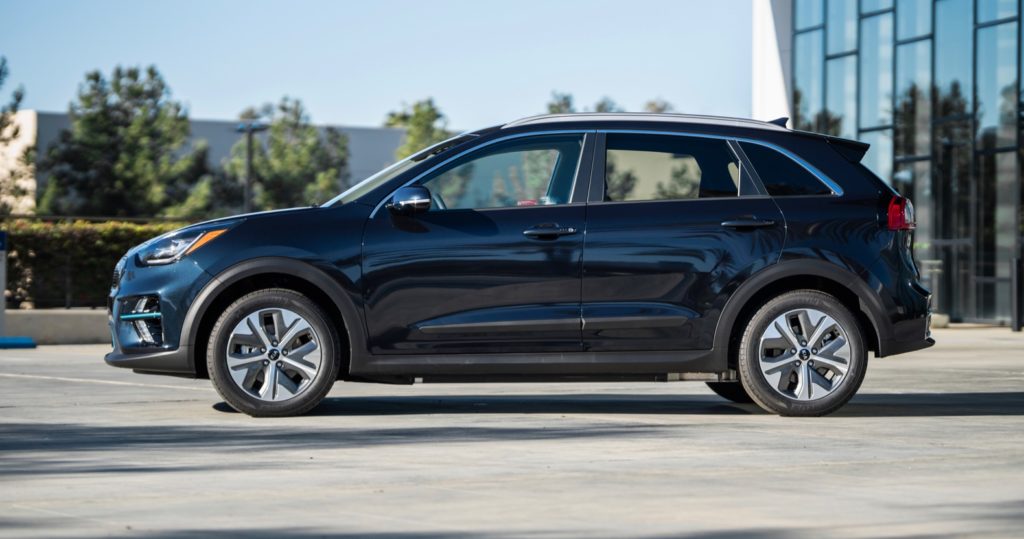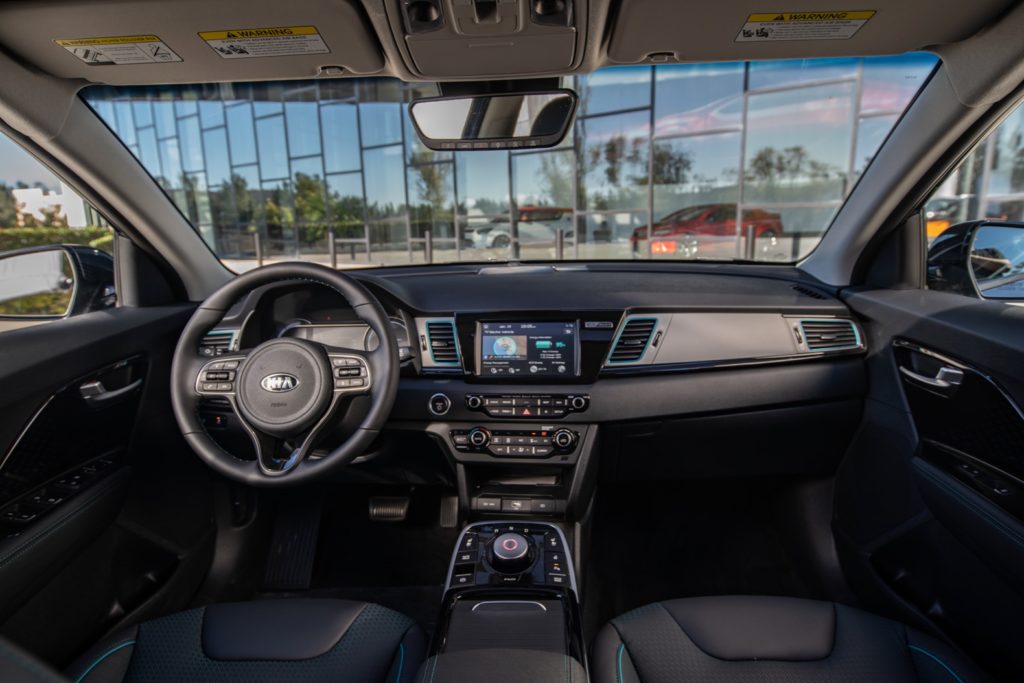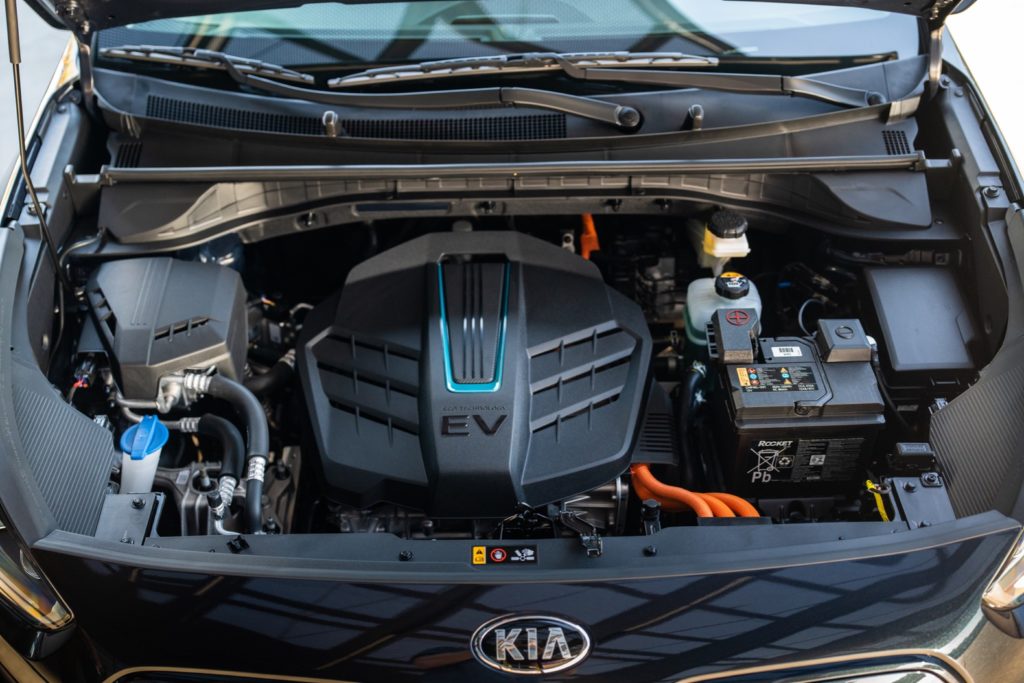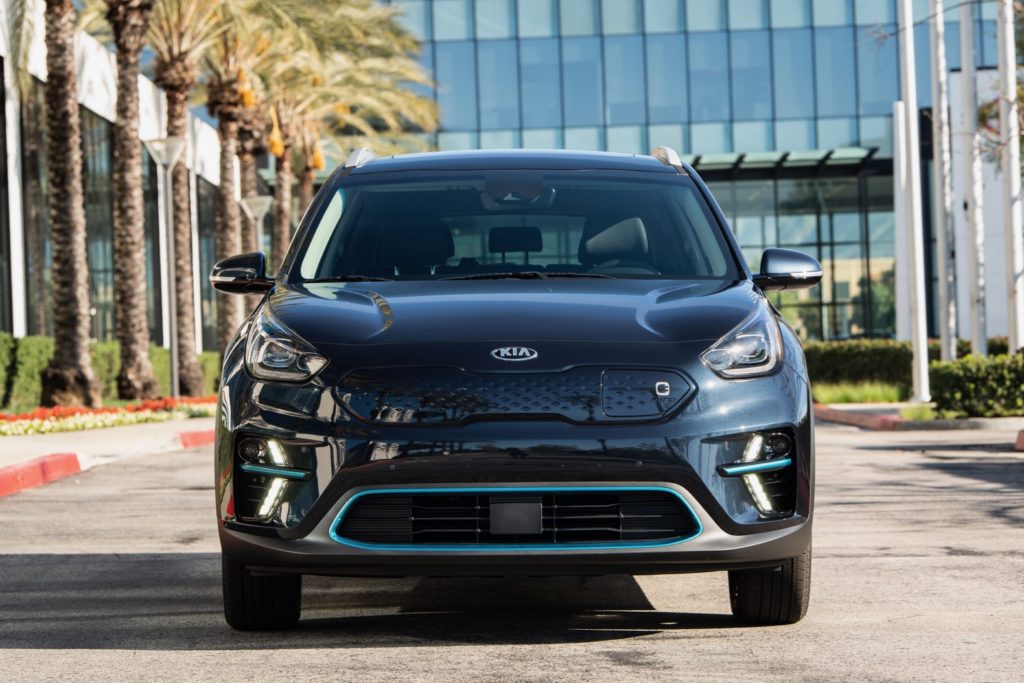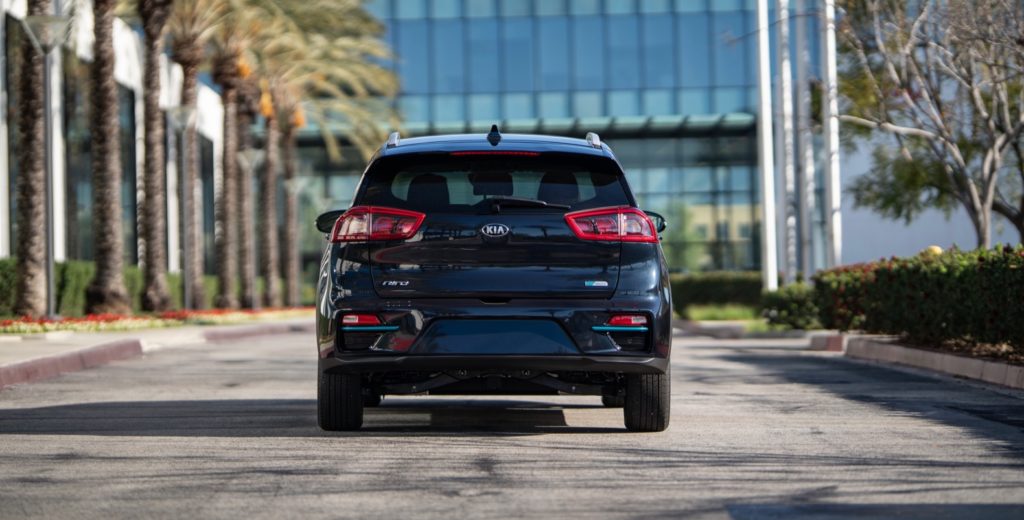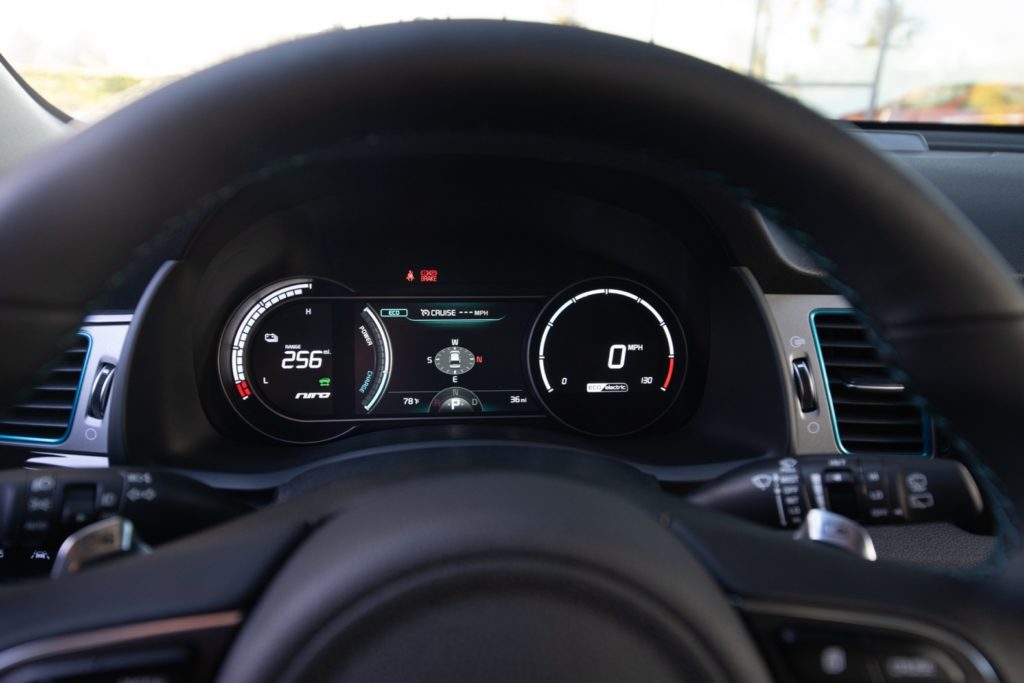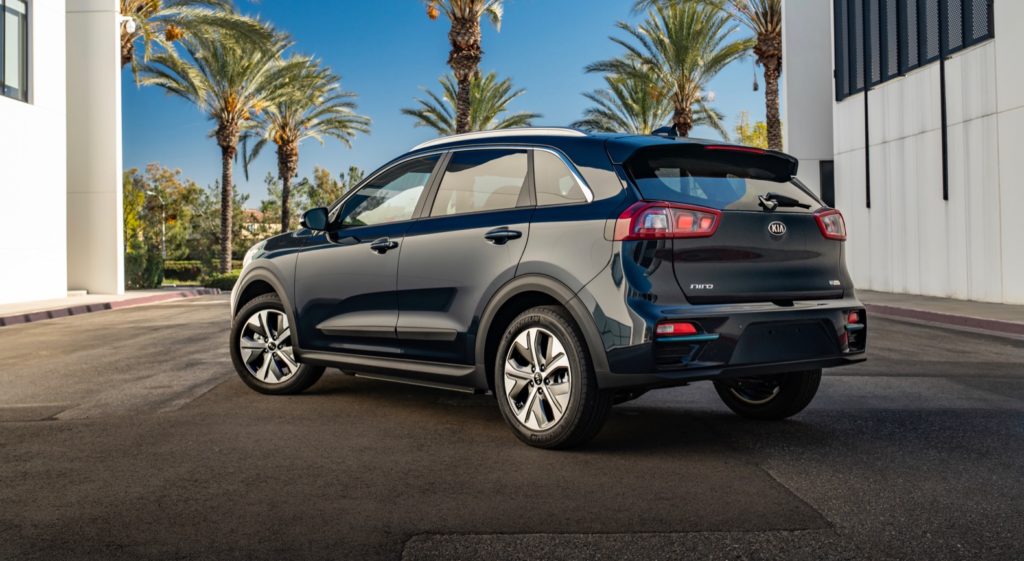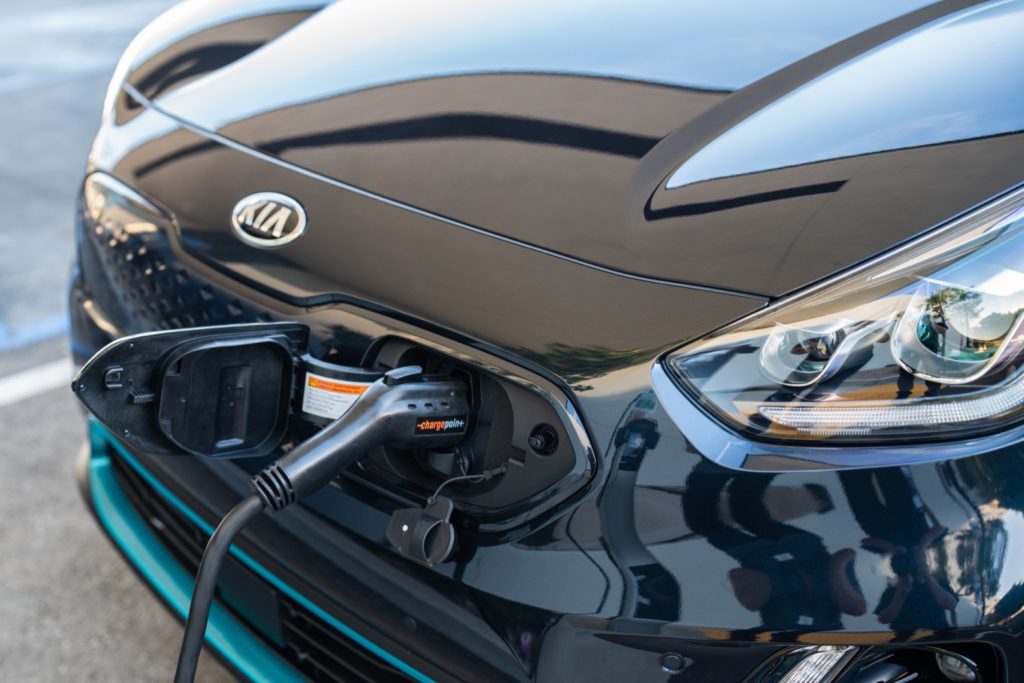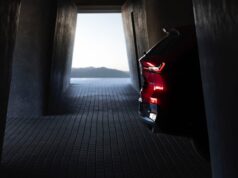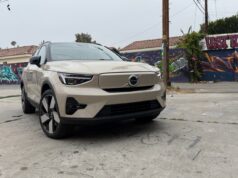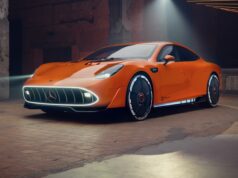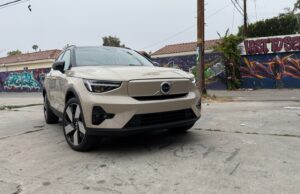We’re now experiencing the first waves of what I would consider useful electric vehicles, by useful I mean over 200 miles of electric range. Even the affordable end of the EV spectrum is seeing plenty of action, and one of the latest new arrivals is the 2019 Kia Niro EV. Like the regular Niro, the Niro EV is styled to look like a crossover SUV but is really more of a hatchback. But while the regular Niro is a hybrid, the Niro EV is propelled solely by battery power for up to 239 miles.
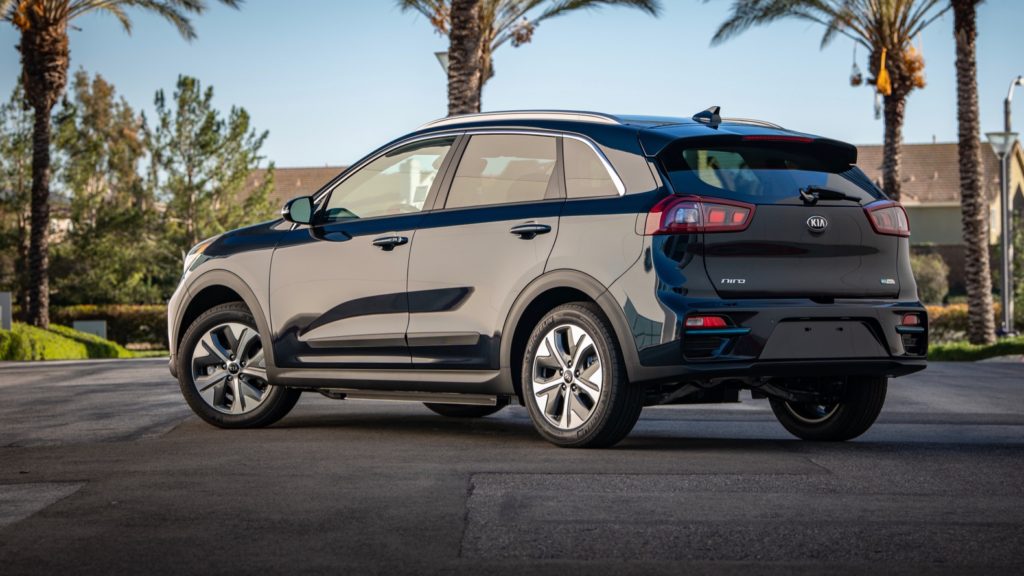
We’ll let the automotive fanatics argue whether the Niro is a crossover, hatchback, or wagon; but to us the long roof is just more practical. From the front, the Niro’s grille is tastefully upright, although the headlights reach further back on the fenders than initial appearances would indicate. That visually shortens what’s a fairly long hood, although the Niro is visually squat and lower to the ground. Deep stampings along the bottoms of the doors sink the car lower to the ground, despite a couple added inches of ride height for easier entry and exit. Kia kept the changes to the exterior fairly modest. The EV gets a sealed-off grille, unique 17-inch wheels and revised fascias front and rear with some unique looking teal accents.
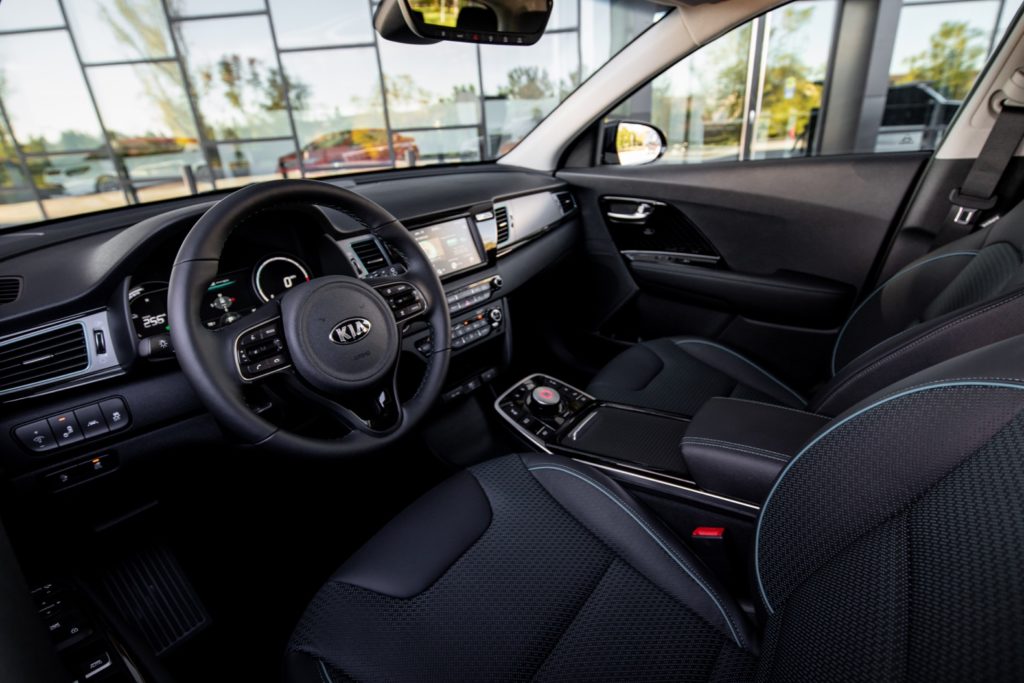
Inside, there’s a smattering of blue trim that perks up the cabin nicely. Otherwise, the interior carries over largely intact from the rest of the Niro range. That means it’s a functional and well-organized place that won’t make you swoon, but it’s certainly a cut above the material choices found in, say, a Chevy Bolt’s cabin. Most of the surfaces are matte black plastic, although a smattering of the high-gloss surfaces show up once again with cool teal accents. One unique feature to the EV is that the driver can select among four levels of regenerative braking in the Niro EV, or none at all. The max regen level is achieved by pulling and holding the left paddle, providing a max of 0.23g of deceleration for as long as the paddle is held. In addition, this regen level is the only one that can slow the car all the way to a halt without having to use the brake pedal. One-pedal driving is therefore possible in the Niro EV, though it’s technically one-pedal-and-one-paddle driving. We wish Kia would simply allow to set the max regen mode without having to use the paddle.
The Niro EV essentially shares its entire powertrain with the Kona EV. Also included are a permanent magnet electric motor (201 horsepower, 291 pound-feet of torque) that drives the front wheels, a 7.2-kW SAE Combo onboard charger, and a 64-kWh lithium-ion polymer battery. With that said, there are a few minor differences between the two implementations. Like many purpose-built EVs, the Niro EV’s mattress-size battery lurks beneath the floor of the passenger compartment, between the front and rear axles. To maintain the same ground clearance as the existing Niro, engineers raised the entire body of the Niro EV by 1 inch to accommodate its low-slung battery. From the front seat, there’s no difference in headroom or legroom compared to the standard Niro.
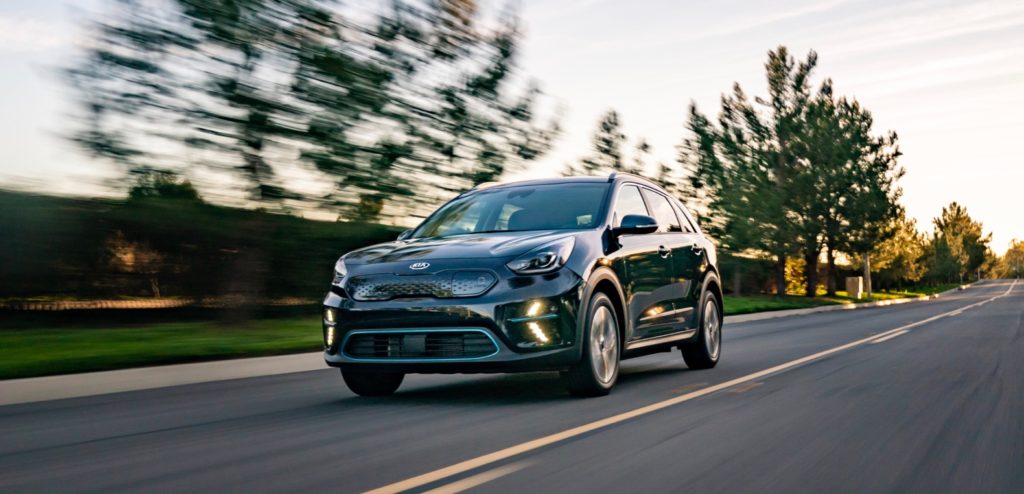
Sure enough, the Niro EV’s ride quality is somewhat graceful overall when driving on lumpy pavement because of the added battery weight. We found that road noise is ample, a situation that’s probably exacerbated by the lack of accompanying traditional powertrain noise. Wind noise is well suppressed, and speeds below 19 mph trigger the federally mandated pedestrian warning sound that’s broadcast to the outside world. In the Niro EV, it sounds vaguely like what sci-fi nerds in the 1960s probably imagined all cars of today would sound like. Score one for the Jetson’s.
Kia reckons the Niro EV will accelerate from 0 to 60 mph in 7.6 seconds, a figure that’s believable based on our brief time behind the wheel. Interestingly, a Hyundai Kona EV we tested hit 60 mph in 6.6 seconds, suggesting that the identically powered Niro EV should be similarly spunky. Kia fits the Niro EV with a shorter axle ratio compared to it’s Kona cousin, which bolsters acceleration at the expense of range at higher speeds. So it’s possible the Niro would even beat the Kona’s 0-60 time. It steers crisply with routine handling that’s responsive if not engaging.
The IIHS says the 2019 Niro is a Top Safety Pick+. In addition to top “Good” scores on all crash tests, including both front- and passenger-side small overlap crashes, the Niro’s optional automatic emergency braking system was rated as “Superior” in avoiding or mitigating forward crashes. Kia includes automatic emergency braking and blind-spot monitors on the EV which is extra on lower level non-EV Niros. Kudos to Kia.
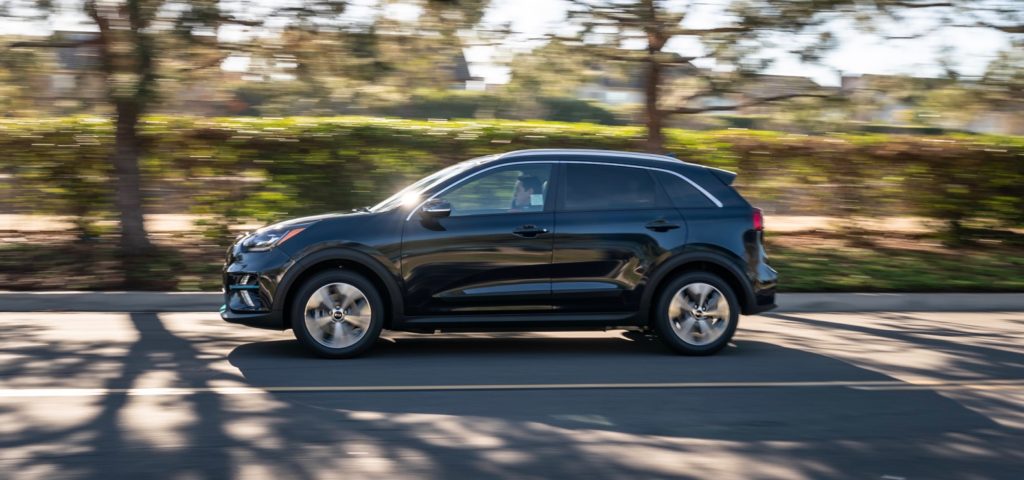
The Niro EV is available in two trim levels, EX and EX Premium. Base EX models are $38,500 and come with the aforementioned driver assistance features, Apple CarPlay and Android Auto, a 7-inch touchscreen and wireless phone charging. EX Premium rings in at $44,000 adds LED headlights, a sunroof, leather, heated and ventilated front seats, navigation and premium audio. Regardless both models, like most current EV’s, are offset by federal and state incentives making them much more affordable.
The overall impression the 2019 Kia Niro EV gives is one of competence with a little excitement. It has decent thrust, is user-friendly, and offers enough refinement to satisfy a wide swath of shoppers. Throw in the Niro’s sizable back seat, ample range and attractive pricing and there’s a strong case to be made that the Niro EV occupies an EV sweet spot. In fact, the Niro’s biggest challenger might well be from Kia’s own offerings as the new Soul EV is right around the corner with the same powertrain and more space. In the meantime, we’d highly recommend the Niro EV.

